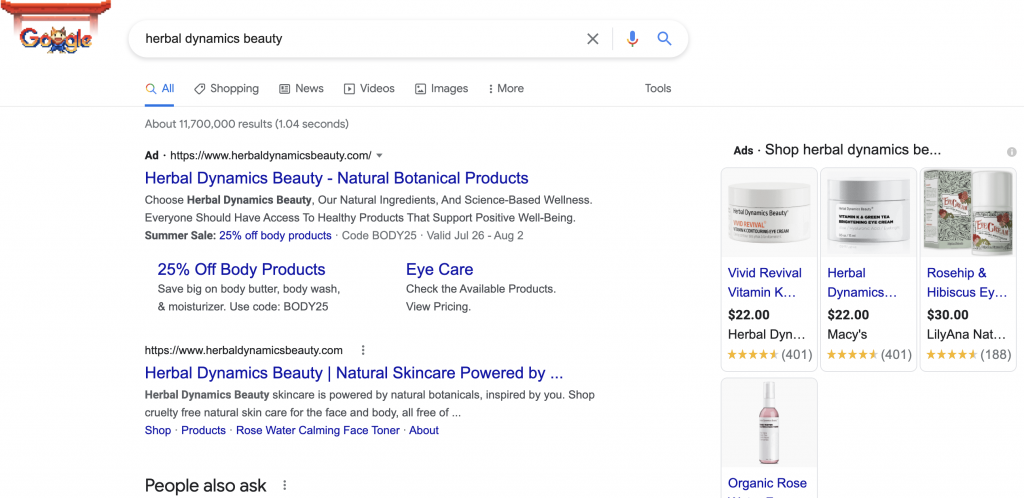Instead of window displays, we’ve got e-commerce ads.
Here, you’ll find:
- How to determine the best e-commerce ad platforms for your brand
- Display ads vs. PPC ads for e-commerce
- What elements make up a successful e-commerce ad
- Pro tips to give you an edge over competitors
Remember the mall? We barely do too.
Depending on what you’re in the market for, perusing through physical aisles and racks to make a purchase isn’t the hyper-common process it once was.
These days, the bulk of shopping happens online. In June 2020, global retail e-commerce traffic hit a record 22 billion monthly visits, “with demand being exceptionally high for everyday items such as groceries, clothing, but also retail tech items,” according to Statista.
If you’re an e-commerce brand looking to stay in the game, online ads are a great way to do it. Search, social, and display ads allow you to target your audience, boost your clickthrough rate (CTR), increase sales, and more. For best practices, agency tips, and expert advice when it comes to e-commerce ad platforms, keep reading.

Before you go all in on one ad platform, you need a solid understanding of where your audience regularly shops. (Image via Unsplash)
1. Work with cohesive vendors
It’ll benefit you to work with vendors that can easily integrate with the other programs your company already uses, especially as your e-commerce business grows. When you’re launching digital ads, it’ll be a more streamlined process when you’re using hosting options (like Shopify or Nexcess) that integrate well with search engines and social media platforms.
If your e-commerce biz doesn’t use a customer relationship management (CRM) tool like HubSpot or has a custom site, you may have to jump through a few hoops to make sure everything for your ads is synced and reporting properly.
It’s also important to find a web hosting solution that makes mobile-first optimizations simple. It’s likely that most of your traffic will come from mobile, so mobile-first conversion rate optimization is key.
If you’re just starting out on the paid ads route, you can set yourself up for success by integrating with a CRM, keeping your site simple to navigate, and making sure you can easily integrate with search engines and social platforms where you’d potentially want to show your ads.
2. Understand paid search vs. display ads for e-commerce
Once you’ve decided to invest in digital ads, the next step is deciding which ad type to leverage. E-commerce brands can certainly find success with paid search or pay-per-click (PPC), particularly through dynamic search ads.
These ads use content and keywords from your site to help better target your ads to the right people (all the more reason to have a strong e-commerce SEO strategy). Simply add a thought-out description, and let the search engine take care of the rest.

An example of paid search e-commerce ads from Herbal Dynamics Beauty on the SERP.
If you want to opt for display ads, e-commerce brands can try their luck with dynamic remarketing (also called retargeting). These ads populate for people who have already visited one of your product pages vs. those who have clicked an ad. Just know that recent Apple iOS updates have made remarketing more challenging. Luckily, there’s plenty of opportunity to reach new potential audiences via display.
These ads are a good money-saving option — you don’t have to have any other forms of advertising for them to work. You can run these on platforms like Google, Facebook, Instagram, and Amazon. Display ads don’t offer as much control over bidding as more traditional campaigns do, but they can be effective when paired with proper bidding strategies and as long as you’re using daily budgets.
Shopping ads can be a highly effective (and lucrative) channel for your e-commerce strategy with proper feed management.
Pro tip: Google recently started serving shopping ads in organic search results, so if you’re already optimizing your ads and have a product feed set up through Google Merchant Center, you get additional opportunities to garner not only PPC traffic but even free traffic, too.
3. Determine where your audience is already shopping
Before you go all in on e-commerce ad platforms, you’ll want to have a solid understanding of where your audience regularly shops. The easier you make it for them to purchase your product or service, the higher ROI you’re likely to see.
Creating PPC ads for Google is a great place for an e-commerce brand to start. If more of your buyers are on Amazon or Instagram, then those could be good options as well. Just make sure you’re not competing against yourself. Running Amazon ads may cause you to outrank your own Google Shopping items, and you don’t want that.
Knowing your audiences can guide you toward the right platforms. For example:
- Bing could be more successful than Google with audiences 50 and older
- Instagram is probably better than Facebook for audiences in their 20s and 30s
- If they’re middle age, Facebook is likely better than Instagram
- If your audience is mostly male, Reddit ads may be worth exploring
The Facebook algorithm works best the more time it has to optimize your ads with their audience pool. It typically needs about 50 conversions to “understand” who to best serve the ads to.
And because it uses a 7-day attribution window, you can’t really get a full picture of ad performance until the 7-day window is up. Best practice: Facebook ads should run a minimum of 5 days, but 7 is optimal to properly understand how it performs.
The same can be said for certain types of Google ads. There are bidding strategies that won’t perform well if the campaigns aren’t driving a minimum of 50 conversions per month, so understanding the nuances of the bid strategies is important for success there as well.

Social ads are a particularly great option when you’re working with a limited budget but want a decent-size reach. (Image via Unsplash)
4. Know what makes an e-commerce ad successful
When it comes to what e-commerce ads resonate best, feel free to be your own test subject! Search for a common item like “blue t-shirt” on Google or Amazon, then check out the results. Which images and ad copy blurbs stand out most to you?
The elements of a successful e-commerce ad will vary by product, industry, and audience. But there are few good rules of thumb that are likely to benefit brands across categories.
Clear, high-quality images without cluttered backgrounds are a good place to start. From there, be sure your products are easy to view on smartphones as mobile commerce or m-commerce continues to rise in popularity.

An example of a promoted tweet for monthly wine club Bright Cellars on Twitter.
Social ads are a particularly great option when you’re working with a limited budget but want a decent-size reach. For these e-commerce ad platforms, think about how you can make your ad seamlessly fit in with organic posts on that specific platform.
Depending on which site your ad will appear on, consider elements like emoji, GIFs or videos, hashtags, and platform-relevant verbiage like “retweet” on Twitter. And, of course, don’t forget about that strong call to action (CTA).
Pro tip: Got a brick-and-mortar location? Make sure your Google My Business (GMB) page is set up correctly with tags in place and the most up-to-date info.
5. Don’t forget about seller ratings
Especially for highly competitive markets, having seller ratings on your ads can be a game-changer for your CTR. As we’ve mentioned, peer recommendations, research, and product reviews are some of the most influential factors that affect purchasing decisions.
If you’ve ever compared an item with 3 out of 5 stars to one with 5 out of 5 (these ratings can be integrated with shopping ads), then gone with the latter, you know what we mean.
As with any ad, think about what sets you apart from your competitors. Something like free shipping may not be as appealing if most of the brands similar to yours are offering that as well. Don’t be afraid to get creative. Is your product the softest, fastest, the first of its kind, or something else? Use that angle in your copy to help the item shine.
6. Perform tests to keep ads optimized
Predicting is one thing — analyzing the data is, of course, another. Once you decide which e-commerce ad platforms you want to experiment with, keep in mind that continued A/B testing will be one of the most effective ways to understand your target audience and what resonates with them.
Eliminate variables and change one thing at a time to properly measure. Do they prefer free two-day shipping or a coupon code? Do they click more on white backgrounds or real-life images? Consistent testing and measuring will help you answer these questions.

With so much shopping taking place online these days, having ads for your e-commerce brand just makes sense. (Image via Unsplash)
Pro tip: Before beginning, determine the goals of your paid ad strategy. Especially if you’re working with an agency, it’s crucial that everyone is aligned on budget, KPIs, and what success looks like. Even if you’re just starting out, look at your spend and product costs to determine what numbers would mean a campaign was successful.
7. Plan for seasonality
Of course, shopping seasons ebb and flow depending on things like holidays and the time of year. That’s why it’s important to plan budgets and ad spend according to the way your brand historically drives sales throughout the year.
For example, an e-commerce brand probably shouldn’t plan on spending the same amount of money on ads during June that they might spend over Black Friday or Cyber Monday, unless there’s a reason they drive huge sales during that time.
If there are other reasons certain seasons impact their sales (i.e. if you sell winter boots or swimsuits), it’s a good idea to allocate greater portions of your budget to support greater sales during those impactful times of the year. During the slow months, pull back a bit to support your annual return on ad spend (ROAS) and overall profitability.
The takeaway
With so much shopping taking place online these days, having ads for your e-commerce brand just makes sense. It’s a great way to expand your reach, boost your sales, and beat out your competition.
By following best practices — like having goals in mind, determining where your audience likes to shop, and making sure you’re putting your business’s best face forward online — you can leverage e-commerce ad platforms and be on the right path to getting the ROI you seek.
This post has been updated and was originally published in March 2020.

